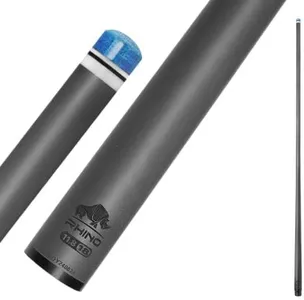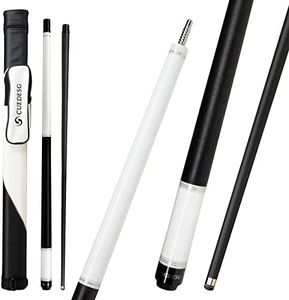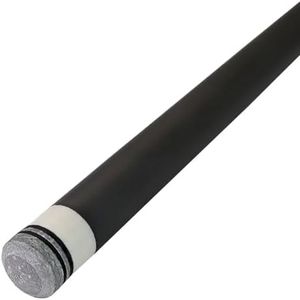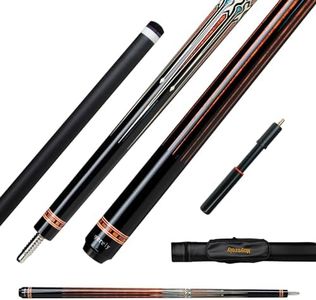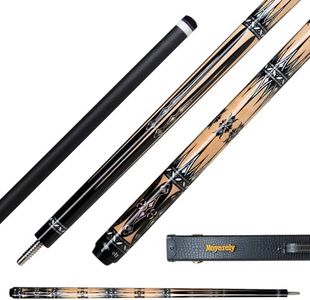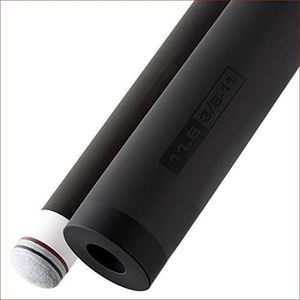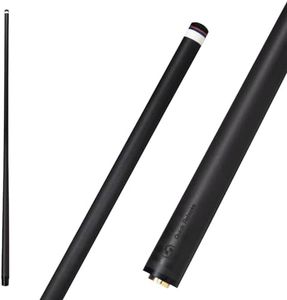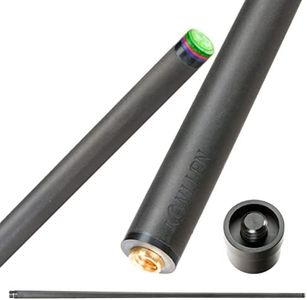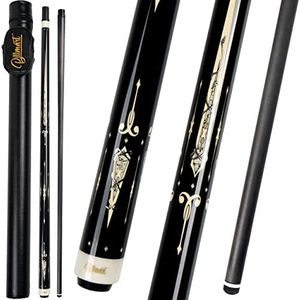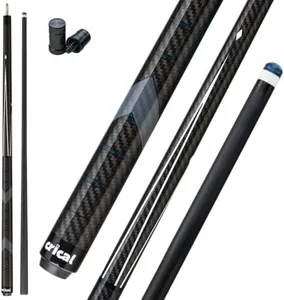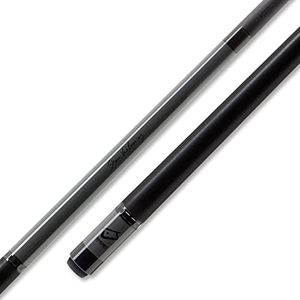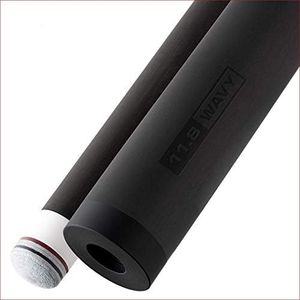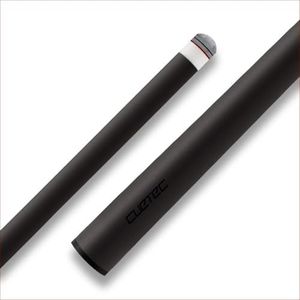We Use CookiesWe use cookies to enhance the security, performance,
functionality and for analytical and promotional activities. By continuing to browse this site you
are agreeing to our privacy policy
10 Best Carbon Fiber Cue Shaft
From leading brands and best sellers available on the web.Buying Guide for the Best Carbon Fiber Cue Shaft
Choosing a carbon fiber cue shaft is about finding the right balance of performance, feel, and durability for your playing style. Carbon fiber shafts are popular because they offer consistency, are less sensitive to environmental changes, and tend to have longer lifespans than traditional wooden shafts. When selecting a carbon fiber cue shaft, it's important to consider how different specifications affect playability, comfort, and precision, as these factors can significantly influence your game. Understanding these key specs will help you pick a cue shaft that matches your skills and preferences.Shaft DiameterShaft diameter refers to the thickness of the narrowest part of the cue at the tip. This is important because a thinner diameter generally allows for easier spin and more precise cue ball control, favored by players who like finesse shots, while a thicker diameter tends to offer more stability and can feel more comfortable for those who like a solid, steady stroke. Common diameters range from about 11.75mm (thin) to 12.75mm (thicker). If you like detailed spin and precision shots, choose a thinner shaft; if you prefer a bit more stability and comfort, go for a thicker one.
Shaft TaperThe taper describes how the shaft gradually widens from the tip down to the joint. There are typically two main types: 'pro taper', which stays the same diameter for a longer portion near the tip, and 'European/gradual taper', which increases steadily along the shaft. A pro taper feels uniform when you bridge, ideal for players who want consistent finger placement, while a gradual taper can offer a more traditional or comfortable feel for others. Decide what feels most natural in your hand and matches your shooting style—many competitive players prefer pro tapers for consistent performance.
Ferrule Material and LengthThe ferrule sits just below the tip and acts as a buffer for impact. In carbon fiber shafts, ferrules come in varying materials and lengths, which can slightly affect the hit and feel. Shorter ferrules may lead to a more direct and crisp hit, while longer ones can soften the feel and increase control. As most carbon fiber shafts already have a stiff, responsive hit, the choice here lets you fine-tune comfort. Players who want maximum feedback may choose shorter ferrules; those looking for a gentler impact can try longer ones.
Tip Type and HardnessThe tip is the only part that touches the cue ball, and its material and hardness are vital. Softer tips grip the ball better and generate more spin but need more maintenance, while harder tips last longer and offer a firmer, more direct impact, but less spin. Medium tips aim to balance these features. Choose a tip based on your style—if you like shaping shots with spin, pick a softer tip; if you prefer durability and a clean, straightforward hit, opt for something harder.
Joint TypeThe joint type is where the shaft screws into the cue butt. The design and material (like stainless steel or composite) can affect the overall feel of the cue. Solid, tightly-machined joints provide a firm, direct transfer of energy, while softer or cushioned joints may dampen vibrations, affecting feel and feedback. Your preference should depend on the kind of feedback you desire—choose a firm joint for clear, crisp hit sensation, or a slightly cushioned one for comfort during long games.
Low Deflection PerformanceLow deflection refers to how much the shaft resists unwanted side movement (squirt) when applying spin. Carbon fiber shafts are generally low deflection by design, but some are built to enhance this even further. Higher low-deflection performance is beneficial for players who rely heavily on spin or advanced shots since they can predict cue ball paths more accurately. Beginners and casual players may not notice as much difference, but as you develop skill, prioritizing low deflection can help with consistency and accuracy.
WeightThe shaft's weight (usually in ounces) affects balance and how the cue feels in your hands. Heavier shafts produce a different sensation and can aid stability on powerful shots, whereas lighter shafts may encourage quicker, more delicate play. If you have a slower, deliberate stroke, you might prefer a heavier shaft; if you like more finesse and faster movement, a lighter shaft may suit you better. Test different weights to find what complements your control and comfort.
Grip and FinishThe outer finish of a carbon fiber shaft determines how it feels and slides through your bridge hand. Smooth finishes allow for faster, friction-free movement, while a slightly textured finish can provide more control or grip. You should consider how sweaty your hands get and what feels best to touch—if you value speed and easy movement, go with a glossy or ultra-smooth finish; if you want a bit more tactile sensation, choose a matte or lightly-textured finish.
